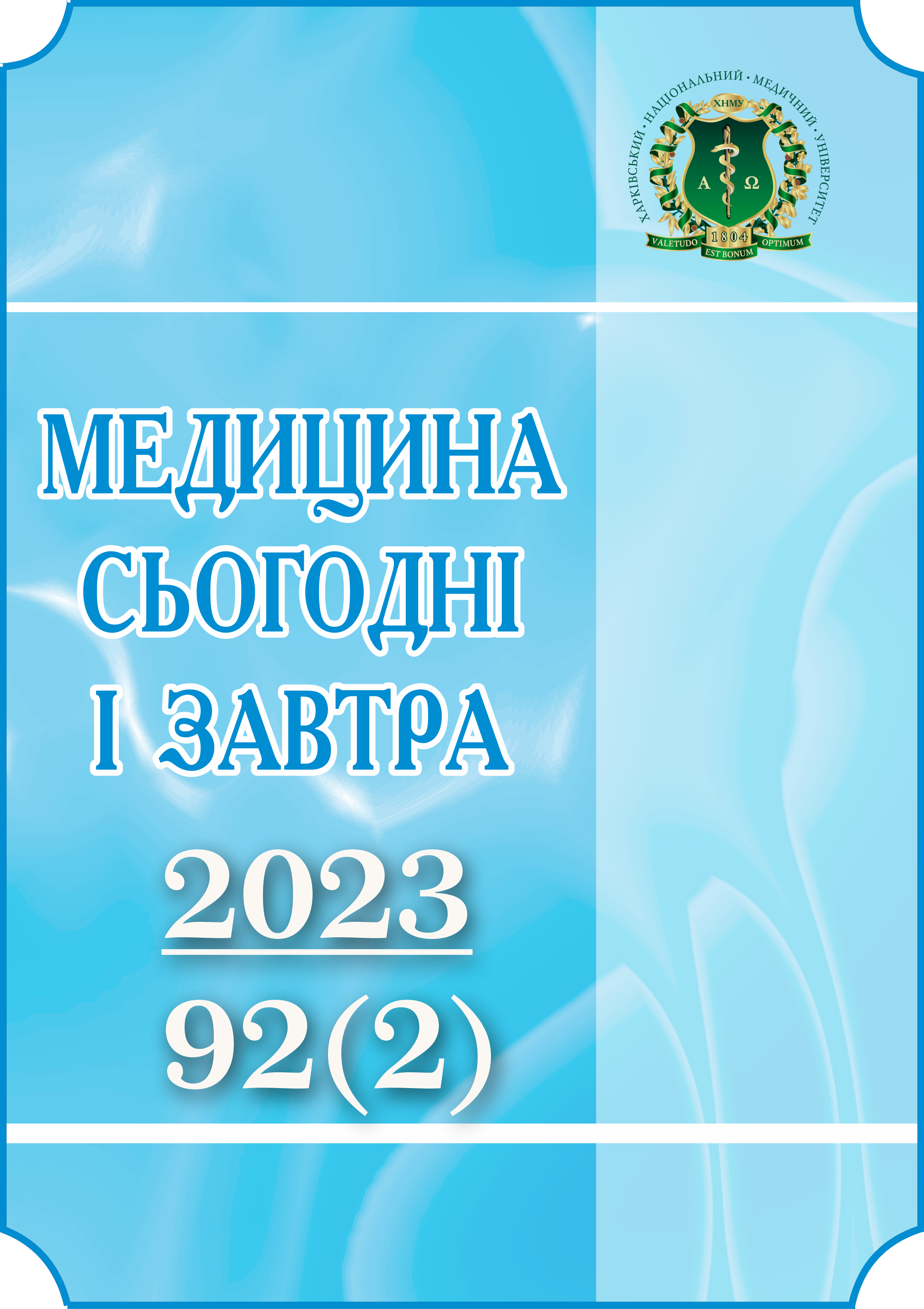Abstract
The aim of the study was to determine how well Ukrainian women perceive and understand information provided at the dentist’s depending on educational level, to assess the role of vocabulary on dental-patient communication. Data for analysis were collected by questionnaire from 358 women aged 18–75 years from Poltava and Zaporizhzhia regions. The questionnaire consisted of 19 questions, 5 of which were taken from the Modified Scale of Dental Anxiety, the others were determined by the authors. The obtained results were statistically processed. The respondents’ characteristics in this study are as follows: with higher education (65.6%), with special secondary (25%) and upper secondary education (9.4%). It was found that 6% of the respondents’ have dentophobia; 12% – high anxiety, and 21% – moderate anxiety; 62% – low anxiety. The impact of medical vocabulary on communication is assessed by respondents as "negative" by 30% and "positive" by 28% of respondents. Unfamiliar words cause "more trust" in 60%, 40%, 36% of the participants, "more anxiety" in 38%, 53%, and 56% of women with upper secondary, special secondary, higher education respectively. The level of availability of the words "endodontic treatment" naturally increases with increasing level of education: the option `do not understand` in groups upper secondary, special secondary, higher education has chosen 88%, 76%, 61% of respondents, respectively. To conclude, high dental anxiety level and dentophobia are more prevalent among respondents with special secondary and higher education. Dentists should minimize the presence of medical terms during their conversations with patients, especially low educational patients. These steps should positively affect dentist-patient communication and psychological aspects of dental treatment in total.
Keywords: dental care, medication adherence, psychometrics, surveys and questionnaires.
References
Doyle NA, Davis RE, Quadri SSA, Mann JR, Sharma M, Wardrop RM, et al. Associations between stress, anxiety, depression, and emotional intelligence among osteopathic medical students. Journal of Osteopathic Medicine. 2021;121(2):125-33. DOI: 10.1515/jom-2020-0171. PMID: 33567085.
Sindhu R, Rajaram S, Bharathwaj V, Mohan R, Manipal S, Prabu D. Is Individual deprivation measures associated with dental anxiety and socioeconomic status of patients visiting dentists. Indian Journal of Dental Research. 2020;31(4):515. DOI: 10.4103/ijdr.IJDR_802_18.
Hill KB, Chadwick B, Freeman R, O’Sullivan I, Murray JJ. Adult Dental Health Survey 2009: relationships between dental attendance patterns, oral health behaviour and the current barriers to dental care. British Dental Journal. 2013;214(1):25-32. DOI: 10.1038/sj.bdj.2012.1176. PMID: 23306496.
Coriat IH. Dental anxiety: fear of going to the dentist. Psychoanal Rev. 1946;33:365-7. PMID: 20993406.
Sukumaran I, Taylor S, Thomson WM. The prevalence and impact of dental anxiety among adult New Zealanders. International Dental Journal. 2020 Sep 14; 31(4):515. DOI: 10.1111/idj.12613. PMID: 32929752.
Kassem El Hajj H, Fares Y, Abou-Abbas L. Assessment of dental anxiety and dental phobia among adults in Lebanon. BMC Oral Health. 2021;21(1):48. DOI: 10.1186/s12903-021-01409-2. PMID: 33541354.
Kostenko V, Barkovska A. Improvement of communication by patients with dentophobia. Proceedings of the 4th International Scientific and Practical Conference "Science, practice and theory" (Japan, Tokyo, 1–4 Feb 2022). Available at: https://is.gd/0b4g4I
Zhang J, Zhang J, Wang K, Yan W. Should doctors use or avoid medical terms? The influence of medical terms on service quality of E-health. Electronic Commerce Research. 2021;23:1775-805. Available from: DOI: 10.1007/s10660-021-09516-6.
Beaton L, Freeman R, Humphris G. Why Are People Afraid of the Dentist? Observations and Explanations. Medical Principles and Practice. 2014;23(4):295-301. DOI: 10.1159/000357223. PMID: 24356305.
Appukuttan D. Strategies to manage patients with dental anxiety and dental phobia: literature review. Clinical, Cosmetic and Investigational Dentistry 2016;8(1):35-50. DOI: 10.2147/CCIDE.S63626. PMID: 27022303.
Baiju R. Oral Health and Quality of Life: Current Concepts. Journal of Clinical and Diagnostic Research. 2017;11(6):ZE21-6. DOI: 10.7860/JCDR/2017/25866.10110. PMID: 28764312.
Education System in Ukraine. Ministry of Education and Science of Ukraine [Internet]. Available at: https://emergency.mon.gov.ua/educationalsystem/ [accessed 16 Feb 2023].
Atanasova S, Kamin T, Petric G. The benefits and challenges of online professional-patient interaction: Comparing views between users and health professional moderators in an online health community. Computers in Human Behavior. 2018;83:106-18. DOI: 10.1016/j.chb.2018.01.031.
Links AR, Callon W, Wasserman C, Walsh J, Beach MC, Boss EF. Surgeon use of medical jargon with parents in the outpatient setting. Patient Educ Couns. 2019;102(6):1111-8. DOI: 10.1016/j.pec.2019.02.002. PMID: 30744965.
Deogade S, Suresan V. Psychometric assessment of anxiety with the Modified Dental Anxiety scale among central Indian adults seeking oral health care to a dental school. Ind Psychiatry J. 2016;25(2):202-9. DOI: 10.4103/ipj.ipj_16_16. PMID: 28659701.
Muneer MU, Ismail F, Munir N, Shakoor A, Das G, Ahmed AR, et al. Dental Anxiety and Influencing Factors in Adults. Healthcare (Basel). 2022;10(12):2352. DOI: 10.3390/healthcare10122352. PMID: 36553876.
Hamilton A, Lamey P, Ulhaq A, Besi E. Commonly used terminology in oral surgery and oral medicine: the patient’s perspective. Br Dent J. 2021;230(12):823-30. DOI: 10.1038/s41415-021-3073-1. PMID: 34172869.

This work is licensed under a Creative Commons Attribution-NonCommercial-ShareAlike 4.0 International License.

